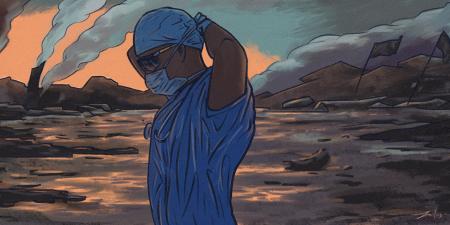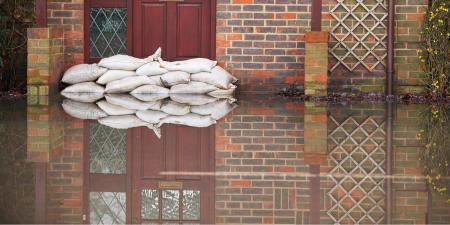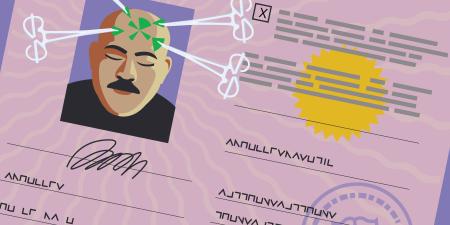Abstract
This commentary on a case analysis examines the principles that govern decisions about which patients might be admitted to an international military hospital during humanitarian or combat operations. It explores the balance between duties under the Geneva Conventions and other international humanitarian laws, the requirement to be able to provide medical support to the military mission, and the obligation of clinicians to coordinate with other health care practitioners (local civilian, local military, and nongovernment organizations). Finally, this commentary considers the practical aspects of implementing these arrangements.
Case
MM commands a military field hospital, physically based on a semi-trailer truck convoy that follows combat troops into disputed territory as part of a United Nations (UN) peacekeeping and security mission to implement and maintain a fragile truce between local government forces and opposition forces. In the disputed territory, the humanitarian crisis is escalating; the number of casualties from armed conflict and the number of displaced persons from affected ethnic groups are increasing. When the convoy arrives and the field hospital setup is complete, MM expects large numbers of injured and ill patients to arrive and seeks resources to meet their basic needs for food, water, shelter, medicines, and other kinds of clinical intervention.
Guards will protect the field hospital’s perimeter and determine who will be allowed to enter the hospital. MM is asked to provide guidance to these guards about admission criteria and whether patients’ ethnic or village origins will be included among those criteria. MM considers how to respond.
Commentary
This case scenario might seem to present a simple question about the procedures to be adopted by the guard force controlling the checkpoint at the entrance to the hospital site. However, these procedures will need to comply with policies for the peacekeeping force on the use of military resources for humanitarian relief, the duties of medical personnel to provide health care free from discrimination and without distinction, and the usage of medical capacity within the whole military field medical system so that health care to the sick or injured is not compromised. The discussion that follows does not cover the arrangements for the treatment of civilians by local military medical services, which can be subject to national laws and procedures.
General Duties
Military field hospitals are normally designed, staffed, and equipped to provide health care for military personnel and other specifically designated groups termed the population at risk (PAR). In a UN peacekeeping mission, the PAR might include other UN personnel, such as police and civilian workers. However, it is inevitable that military medical units (eg, ambulances, field hospitals) will be presented with civilian casualties, both those caused directly by conflict and those attributable to natural causes. In Iraq and Afghanistan, United Kingdom field hospitals received a significant number of civilian casualties and casualties from the local security forces.1 This pattern has been replicated in the US military experience in Iraq2 and Afghanistan,3 the German experience in Afghanistan,4 and the Chinese experience in a UN peacekeeping mission in Mali.5
Parties in armed conflict have a general duty to ensure that the wounded and sick receive the medical care that they require with minimum delay and without distinction, except on medical grounds. This provision is made in all of the Geneva Conventions and Associated Protocols and covers wounded enemy combatants, prisoners, civilians, and the shipwrecked.6 These international treaties and protocols ensure unrestricted access to care, although the obligation of state parties is to ensure that care—not necessarily all clinical services—is provided. Therefore, the military policy on admission to hospital for patients other than the designated PAR will need to consider the capabilities and capacities of the whole health system, including local private and public facilities and nongovernment organizations (eg, the Red Cross or Red Crescent).7 This assessment might include plotting all medical facilities with contact details on a map.
Even if health care workers in the armed forces act in a humanitarian manner, they are part of a designated military force. While they can uphold the principles of humanity and impartiality, they cannot be neutral (unaligned to any security actor) or operationally independent of political actors.8 Based on guidance from the Global Health Cluster of the Inter-Agency Standing Committee of the UN Office for the Coordination of Humanitarian Affairs, military medical units should only provide direct or indirect health assistance to civilians in emergencies and as a last resort if there are no other clinically suitable alternatives.9 Therefore, patients with nonurgent clinical conditions (often defined as not threatening life, limb, or eyesight) should be refused entry and should be encouraged to use civilian health services.
Clinical personnel need to consider the circumstances in which they might have to refuse treatment or give care that differs from their national practice.
Once an emergency patient has been accepted, in accordance with the International Committee of the Red Cross’ Ethical Principles of Health Care in Times of Armed Conflict and Other Emergencies, military medical units and personnel “are required to render immediate attention and requisite care to the best of their ability. No distinction is made between patients, except in respect of decisions based upon clinical need and available resources.”10 Military field hospitals are designed to stabilize and rapidly evacuate military patients as part of a care pathway.11 They are neither staffed nor equipped for the long-term care of patients. Therefore, any decision to accept non-eligible patients should be seen as part of a care pathway from prehospital care through discharge from medical care, with a presumption of transferring these patients to the local medical system at every step unless clinically impossible (eg, cases requiring respiratory ventilation that is not available in the local health system).12 Exceptionally, it might be possible for nonurgent civilian patients to be treated in the military hospital if there is both the capacity and the capability to meet the patient’s needs and the local health system cannot provide suitable clinical care.
Beyond these generic principles, specific guidance is likely to be issued by the UN peacekeeping mission alongside instructions issued by the national medical authorities of the military medical units. These protocols are likely to include defined medical rules of eligibility (MRoE) that designate the PAR and the circumstances whereby civilians may receive medical care in an emergency, usually in circumstances in which their life, limb, or eyesight is at risk.13 The application of these MRoE balances the utility of ensuring that beds are empty and available for the PAR with the humanity of meeting the nondiscriminatory emergency needs of patients.14
Specific Responsibilities
Although a military hospital is responsible for its own local security, it might be situated within a wider military compound that is guarded by combatants. To ensure safety, there needs to be a system at the main entrance for the clinical assessment of patients seeking care to confirm their status under the MRoE. Unfortunately, ambulances and sick patients have been used as cover to attack military installations.15 Therefore, a full security check will need to be undertaken before the clinical assessment can be made.
In the case, MM and the leadership team of the field hospital should ensure that they understand the context of the specific crisis, including the existing local health system and humanitarian response. This contextual knowledge should include the UN policies and procedures for medical support.16 Coordination links should be established through the World Health Organization-sponsored humanitarian Health Cluster or the national Ministry of Health so that referral and transfer arrangements can be made for any local patients that are admitted. MM should determine the probability of civilians needing emergency medical care (including for nonconflict medical emergencies, such as obstructed labor) and ensure that sufficient staff and equipment are provided. This preparation should be clinically pragmatic, based on an understanding of the nature and quality of clinical care available in the local health system, and include educating military medical personnel on the cultural aspects of caring for patients who speak a different language and have different values. This education should be included in predeployment training and also cover the clinical management of predictable scenarios, such as severe burns, significant head injury, obstetric and other nontrauma emergencies, neglected conflict wounds, cancer, and congenital disease. The management of such cases is likely to be challenging if there is a substantial disparity between the capability of the local health system and that of the international military field hospital and its evacuation pathway. Clinical personnel need to consider the circumstances in which they might have to refuse treatment or give care that differs from their national practice. It is also important to consider how to share clinical information on patients with local civilian health authorities without compromising their security, especially if local combatants are treated.
Finally, MM and the team will need to consider the potential impact of the media and news interest in their response to any perceived humanitarian crisis. They will need to consider how to handle requests from journalists for interviews, photographs, and video recordings of the medical unit and their patients. It will be vitally important to ensure a legal and ethical approach to consent for engagement with the media and to ensure patient confidentiality.
Conclusion
Conflict and other humanitarian crises might require health care workers to make very difficult decisions that have substantial ethical implications. Many issues, such as the care of nonmilitary patients with predictable health emergencies (eg, severe trauma, obstetric crises, severe burns), can be anticipated and mitigated by policy, procedures, and training. It is important that clinical health care workers are able to fulfill their legal and ethical duty to provide individual health care solely on the basis of clinical need. However, it is also important to provide guidance on balancing the utility of maintaining the medical system’s capacity to meet the potential needs of the designated PAR and the humanity of meeting the needs of all those affected by conflict.
References
- Bricknell MCM, Nadin M. Lessons from the organisation of the UK medical services deployed in support of Operation TELIC (Iraq) and Operation HERRICK (Afghanistan). J R Army Med Corps. 2017;163(4):273-279.
- Lundy JB, Swift CB, McFarland CC, Mahoney P, Perkins RM, Holcomb JB. A descriptive analysis of patients admitted to the intensive care unit of the 10th Combat Support Hospital deployed in Ibn Sina, Baghdad, Iraq, from October 19, 2005, to October 19, 2006. J Intensive Care Med. 2010;25(3):156-162.
- Causey M, Rush RM Jr, Kjorstad RJ, Sebesta JA. Factors influencing humanitarian care and the treatment of local patients within the deployed military medical system: casualty referral limitations. Am J Surg. 2012;203(5):574-577.
- Willy C, Hauer T, Huschitt N, Palm HG. “Einsatzchirurgie”—experiences of German military surgeons in Afghanistan. Langenbecks Arch Surg. 2011;396(4):507-522.
- Zhang D, Li Z, Cao X, Li B. Four years of orthopaedic activities in Chinese Role 2 Hospital of eastern Mali peacekeeping area. BMJ Mil Health. 2020;166(3):156-160.
-
Rule 110. Treatment and care of the wounded, sick and shipwrecked. International Committee of the Red Cross. Accessed September 29, 2021. https://ihl-databases.icrc.org/customary-ihl/eng/docs/v1_cha_chapter34_rule110
- Bricknell M, Hinrichs-Krapels S, Ismail S, Sullivan R. Understanding the structure of a country’s health service providers for defence health engagement. BMJ Mil Health. 2020;167(6):454-456.
- Horne S, Burns DS. Medical civil-military interactions on United Nations missions: lessons from South Sudan. J R Army Med Corps. 2021;167(5):340-344.
-
Inter-Agency Standing Committee. Civil-military coordination during humanitarian health action (provisional). Global Health Cluster, World Health Organization; 2011. Accessed September 29, 2021. https://cdn.who.int/media/docs/default-source/documents/publications/civil-military-coordination-during-humanitarian-health-action6bf6764e-0f24-4f88-a6de-4af40db18f04.pdf?sfvrsn=7e1d0d6e_1&download=true
-
International Committee of the Red Cross. Ethical principles of health care in times of armed conflict and other emergencies. Accessed September 29, 2021. https://www.icrc.org/en/download/file/21341/icrc_ethical_principles.pdf
-
Bricknell M. For debate: the operational patient care pathway. BMJ Mil Health. 2014;160:64-69.
-
Bricknell MC, dos Santos N. Executing military medical operations. BMJ Mil Health. 2011;157:S457-S459.
- Kelly J. Following professional codes of practice and military orders in austere military environments: a controversial debate on ethical challenges. J R Army Med Corps. 2015;161(suppl 1):i10-i12.
- Gross ML. Saving life, limb, and eyesight: assessing the medical rules of eligibility during armed conflict. Am J Bioeth. 2017;17(10):40-52.
- Jasani GN, Alfalasi R, Cavaliere GA, Ciottone GR, Lawner BJ. Terrorists’ use of ambulances for terror attacks: a review. Prehosp Disaster Med. 2020;36(1):14-17.
- Yu MLR, Qiu L. Overcoming new challenges in medical support for UN peacekeeping operations. Int Rev Armed Forces Med Services. 2018;91(1):20-28.



